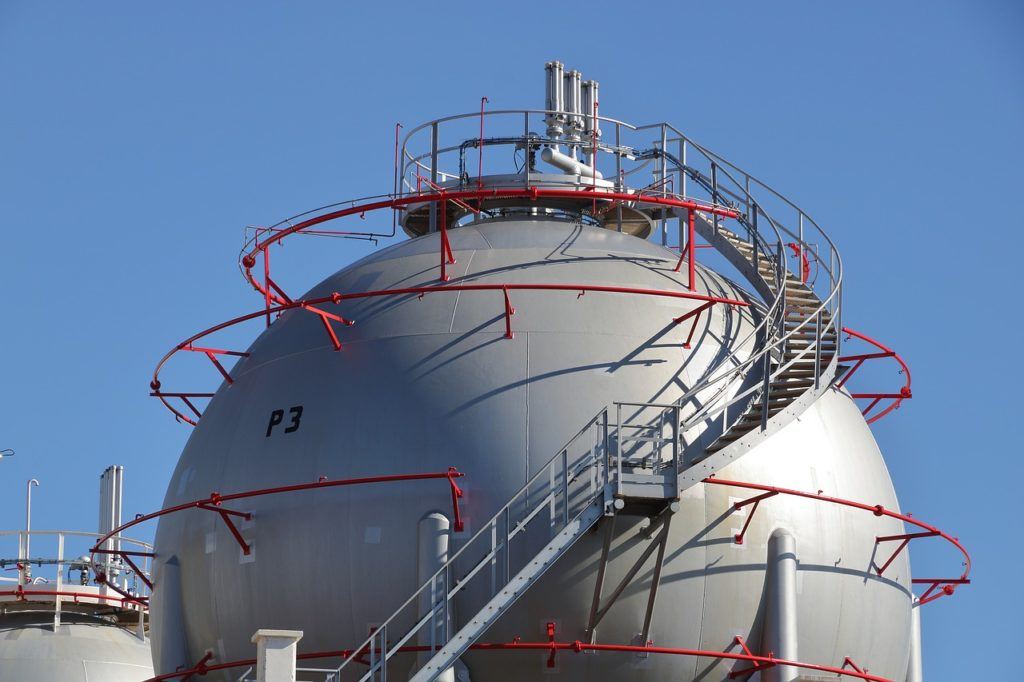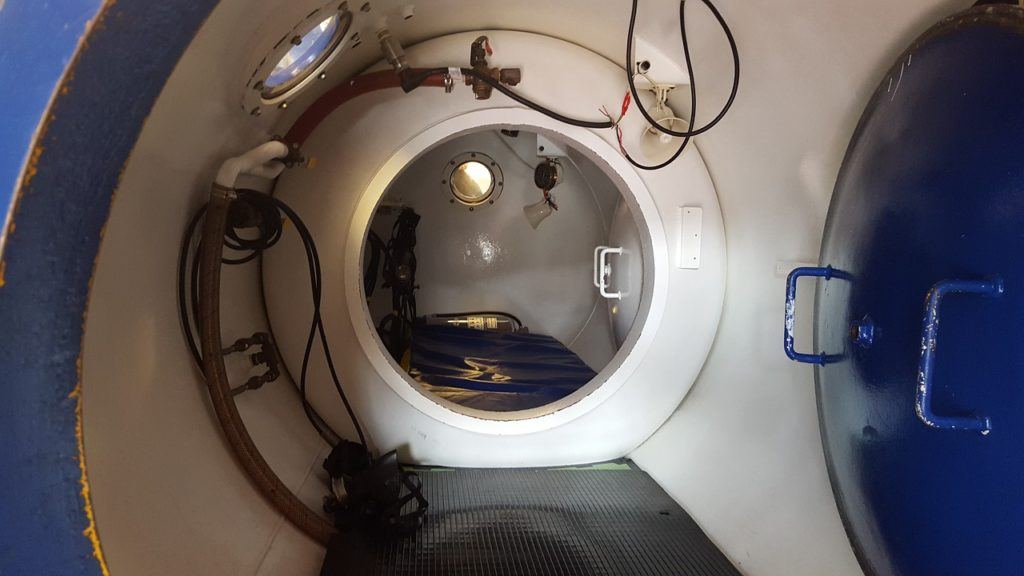Types of Pressure Vessels and How they Work [Detailed Explanation]
According to the ASME (American Society of Mechanical Engineers) Boiler and Pressure Vessel Code Section VIII, the term pressure vessel refers to containers that are designed for containment of pressure, whether external or internal. This pressure could be a result of heat application from a direct or indirect source because of a process, from an external source, or even a combination of both.
The ASME Code outlines the construction code for pressure vessels and comprises mandatory requirements, non-mandatory guidance regarding pressure vessel materials, specific prohibitions, along with their examination, design, fabrication, inspection and testing and certification.

Pressure Vessel Shapes
Pressure vessels can be of any shape, but in most cases, they are made of sections of cones, cylinders, or spheres. Cylinder remains the most common shape of all and its end caps are referred to as heads, which also have different shapes. While other shapes can be used, they are avoided because they are harder to build and it is difficult to ensure safety.
A sphere is an ideal shape for making a pressure vessel, but it is costly to manufacture as there are a lot of complications involved. Therefore, the cylindrical shape is more common these days, even though their width can increase the cost.
Pressure Vessel Applications
There are different applications of pressure vessels in industries and in the private sector as well. In industries, pressure vessels are used for compressed air receivers, recompression chambers, autoclaves, distillation towers, and diving cylinders.
The industrial uses certainly don’t stop here because they have also been used as storage vessels for storing liquefied gases like chlorine, butane, propane, and ammonia. Petrochemical plants, oil refineries, and mining operations also use pressure vessels.
In fact, they are also used in the passenger cabins of airliners. The cabin pressurization tools and aircraft maneuvering loads are carried by the outer skin. A unique application of a pressure vessel is in the form of a rupture disc that protects a process piping system, equipment, or pressure vessel from getting over-pressurized or from being potentially damaged by vacuum conditions.
Rupture discs are commonly used for pressure protection in industrial plants. These rupture discs are great for pressure relief because they are leak-proof and provide fail-safe performance at a very economical price.
As far as domestic use of pressure vessels is concerned, they are mostly seen in hot water storage tanks.
Types of Pressure Vessels according to Shape
Spherical Pressure Vessel
This particular type of pressure vessel is ideal for storing high-pressure liquids. A spherical structure is a very strong one because the stresses are evenly distributed on its surface, both externally and internally. Thus, it eliminates any weak points, but it is also true that manufacturing them can be a lot more expensive than their cylindrical counterparts.
They also require ancillary equipment like tank storage. For instance, access vacuum/ pressure vent or manholes that can prevent breathing loss from barometric pressure changes, Earthing points, daily temperature, access ladders, or venting loss from boiling.
A great benefit of spherical pressure vessels is that they possess a smaller surface area for every unit of volume, as compared to any other shape. This means that the amount of heat transferred to liquid within the sphere from warmer surroundings will be a lot less as opposed to rectangular or cylindrical storage vessels.

Cylindrical Pressure Vessels
As this particular shape of pressure vessels is less expensive to produce, they are widely used for storage. Nonetheless, it should be noted that cylinders don’t have the same strength as spheres because they have a weak point at each end.
It is possible to reduce this weakness by opting for fitted rounded or hemispherical ends. If a thicker material is used for manufacturing the whole cylinder, then it can have the same storage pressure as that of a spherical pressure vessel.
Types of Pressure Vessels according to Purpose
In modern society, pressure vessels have become ubiquitous and are usually unseen by the general public. However, it is also a fact that industrial pressure vessels are crucial for constant processing and manufacturing in commercial and industrial organizations.
Hence, they can have a direct impact on the physical and economic wellbeing of society. These pressure vessels play a very intricate role in the world of manufacturing and processing and manufacturing and industrial plants would be a lot less effective without them.
Three common types of pressure vessel containers can be found, with each serving a different purpose, but they all work together to help in production. Apart from these three, there are some specialized pressure vessels as well, such as regeneration and reactor vessels, but mostly pressure vessels correspond to three common types outlined below:
Storage Vessels
Perhaps, the most prolific of all the pressure vessels are these storage tanks that are required for a number of industrial processes. Storage vessels are mostly cylindrical in shape, boasting flat bottoms and are perpendicular to the ground. They have a floating or fixed frangible roof.
Usually, many environmental regulations apply to the operation and design of these storage vessels, depending on the nature of the fluid stored within. There are above-ground storage tanks (ASTs) and underground storage tanks (USTs) and different kinds of regulations apply to both.
The former can be used for storing materials, such as waste matter, petroleum, chemicals, water, and other hazardous material, all the while complying with strict industry regulations and standards.
Storage vessels are available in a variety of shapes, including horizontal and vertical cylindrical, closed top and open top, cone bottom, flat bottom, dish bottom, and slope bottom. The large ones tend to be vertical cylindrical, but there are also some spherical storage vessels used as well.
These pressure vessels are primarily used for storing liquids and can be found in a wide range of sizes. Depending on the product that has to be stored or the purpose they have to serve, these pressure vessels are constructed with various materials, with the most common material being carbon steel.
In fact, in several cases, a different material is used for the internal liner, along with the external material of the vessel. This allows the use of a material for external construction that would be damaged if it was exposed to the product inside. The purpose is to reduce the cost of manufacturing the storage vessel as a special material doesn’t have to be used.
There are different types of storage vessels that are used these days, which include atmospheric, thermal storage tanks, high pressure, septic tanks, milk tank, water tanks, and mobile ‘storage’ tanks.

Heat Exchangers
The second most common type of pressure vessels, and almost as prolific as storage vessels, is called the heat exchanger. Modern processing and manufacturing have been made possible by these heat exchangers and they can be found in almost every aspect of our lives.
It is a widely known fact that heat, due to its nature, can prove to be very destructive in many industrial processes. Therefore, it has to be reused or removed to handle this concern. This is where heat exchangers come in because they are used for transferring heat between two fluids or more.
Heat exchangers can actually be used for both heating and cooling processes. A solid wall may be used for separating the fluids to prevent mixing or they will come into direct contact. Thus, it is crucial that the material chosen for making the heat exchanger ensures that this vessel operates at peak optimization for extended periods.
The most commonly used material for making these heat exchangers is carbon steel, but it is also common to use stringent alloys for ensuring proper functioning and longevity. Heat exchangers have three primary classifications as per their flow arrangement and they are parallel flow, counterflow, and cross-flow, respectively.
There are also different types of heat exchangers, which include shell and tube heat exchanger, plate and shell heat exchanger, plate-fin heat exchanger, plate heat exchanger, pillow plate heat exchanger, adiabatic wheel heat exchanger, waste heat recovery unit, fluid heat exchangers, phase-change heat exchanger, dynamic scraped surface heat exchanger, microchannel heat exchanger, and direct contact heat exchanger.
Common applications of heat exchangers can be seen in space heating, power stations, petrochemical plants, chemical plants, natural gas processing, petroleum refineries, sewage treatment, and air conditioning. Classic examples of heat exchangers include a heat sink that uses a passive heat exchanger and an internal combustion engine.
Process Vessels
The most versatile type of pressure vessels, process vessels are essential components in which different processes are performed. These vessels are designed to handle temperature and pressure and are used in almost all industries and in conjunction with the other two types of pressure vessels as well. These can be immensely useful, whether you want to hold heat, agitate, store, or even chemically alter the medium.
In simple terms, a process vessel is a container that’s created and equipped with the accessories and controls for completing different processes, as part of an overall process. The material used for making the process vessel, along with its control and accessories, depends on the intended purpose.
As mentioned above, cooling, blending, purification, separation, and changing the state of material are just some of the processes that can be conducted in a process vessel. It is possible to connect a process vessel to the next or previous processes horizontally or vertically.
The numerous stages, steps, and processes utilized in processing industries usually have specific requirements regarding temperature, time, pressure, and other operating conditions. These operating conditions can be properly controlled with the help of appropriate process vessels at every step, until the exact product required is created.
Some of the process industries that make use of these process vessels include food and drug manufacturing, paint, refineries, and other similar operations manufacturing products in huge quantities. Listed below are some of the common types of process vessels:

Process vessels are usually created and manufactured according to the process requirements of the manufacturer. They can serve different purposes, including breaking down a product, removing a component of a product, or combining two products with each other.
Heat exchangers are responsible for controlling the flow of the heat to a product, process vessels are used for perfecting the product whereas storage vessels are used for storing it. Thus, it is a combined effort of all three types of pressure vessels. All these pressure vessels aim to ease and simplify processing and manufacturing in various industries.

It is possible to define all three of these pressure vessels by other aspects. However, some important elements should be common in all of them; a proper design, use of the right materials in construction, and construction done right. If there is a deficiency in any of these aspects of these pressure vessels, it can become a major obstacle for the process as well as the outcome.
It is also imperative that each of these pressure vessels be regularly maintained and attended to for ensuring that they continue to perform optimally and safely. They have to be inspected regularly to verify their condition. Inspection equipment is available and can be used to keep your pressure vessels running to allow for smooth manufacturing and processing.
We have tried to comprehensively cover the basics of what pressure vessels are, the numerous types of pressure vessels, how they work, and their applications in modern times for your better understanding. If there is anything else you’d like to know, please feel free to leave your feedback.
